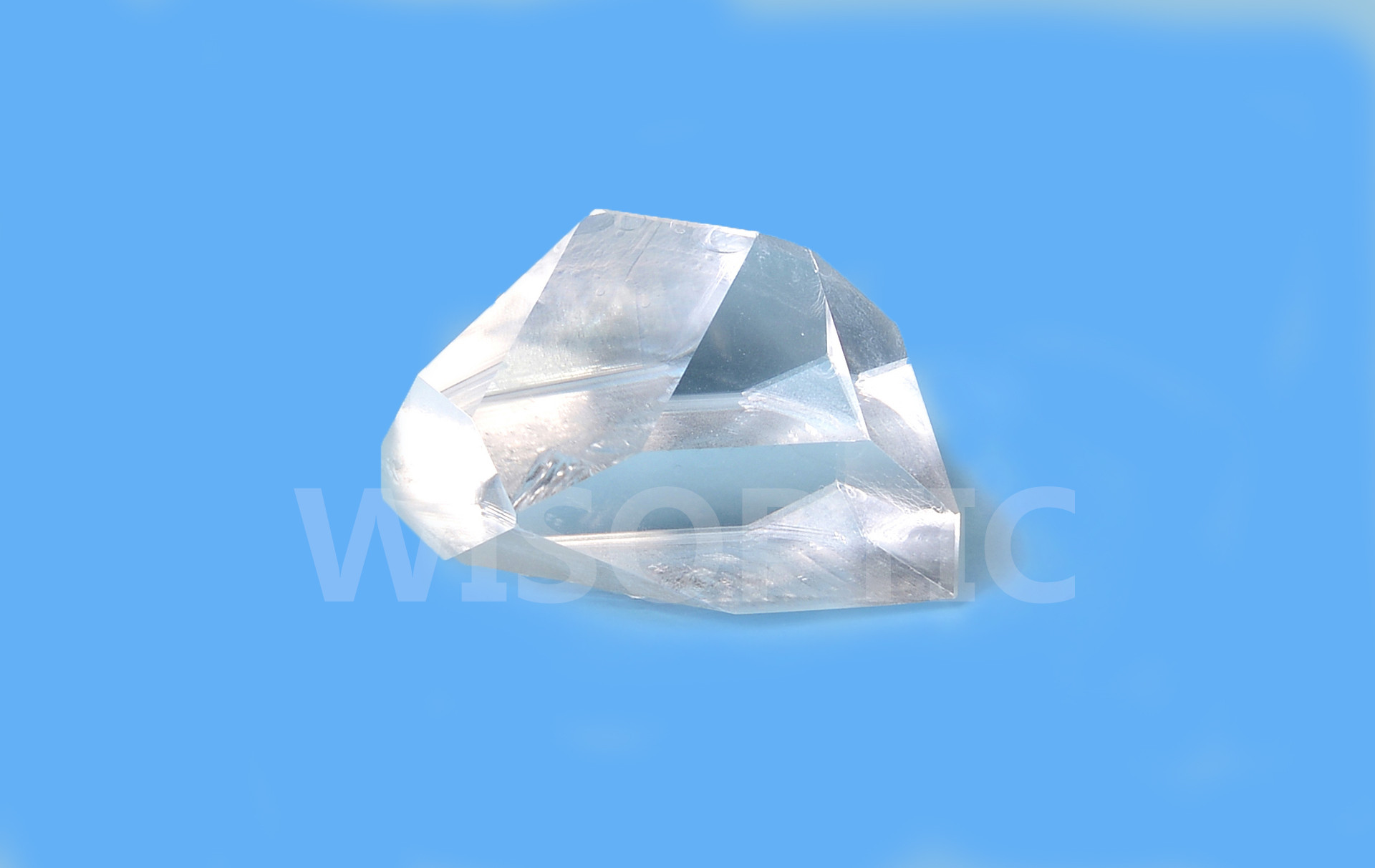Key technology of lasers: the nonlinear crystals for frequency doubling
In the all-solid-state UV laser, nonlinear crystal for frequency conversion is one of the most important component. By using the physical and chemical properties of the nonlinear crystal, UV light can be obtained by fourfold or fivefold of the fundamental frequency. In the design of ultraviolet lasers, the output power and beam quality of UV lasers mainly depend on the quality of the nonlinear crystals. Since the advent of nonlinear crystals, through the unremitting efforts of researchers, many excellent UV nonlinear crystals have been developed and applied to UV lasers, among which BBO, LBO, BIBO, CLBO, KBBF are more commonly used.
BBO (β-BaB2O4) was successfully studied by the Chinese researchers for the first time. The light transmission range of BBO is 0.19 ~ 3.5μm. It has large phase matching angle, high damage threshold and high frequency doubling efficiency. BBO crystal has problems of deliquescence which leads to harsh storage conditions. BBO crystal is mainly used in fourfold or fivefold frequency doubling to generate UV light (266nm, 213nm), and can also be used for SHG or THG in dye lasers, as well as optical parametric oscillation (OPO) and optical parametric amplification (OPA). In terms of frequency doubling, BBO is an excellent nonlinear crystal.
LBO (LiB3O5) is developed by the same research team of BBO. LBO crystal has relatively wide light transmission band (0.155~3.2μm), good transmittance in UV band, and slight deliquescence which is not demanding for storage environment. LBO crystal has good physical and chemical properties, high damage threshold, moderate nonlinear optical parameters, relatively large acceptance angle, and small walk-off angle (so the walk-off effect is relatively insignificant). LBO has been widely used in frequency doubling and sum-frequency in nonlinear transformation. Due to its low nonlinear coefficient and low frequency doubling efficiency, the refractive index of LBO is sensitive to the temperature. Thus special attention should be paid to temperature control when using LBO. LBO is suitable for both critical phase matching and non-critical phase matching. Compared with niobate crystals, LBO has higher laser damage threshold and wider range of wavelength adjustment in non-critical phase matching, allowing a wider temperature range. Although the niobate crystals have a large nonlinear coefficient, their temperature range allowed for matching is very narrow, which limits the use of such crystals.
BIBO (BiB3O6) is a kind of biaxial nonlinear crystal with low symmetry. Although BIBO was first reported in 1962, it has not been applied to the multiplier effect until 1999. Because of its wide transmittance band (0.27~2.6μm), BIBO crystal is not only used in the SHG of 1064nm, but also in the THG to generate 355nm beam, and in the sum frequency generation. BIBO has stable physical and chemical properties, high environmental adaptability, weak deliquency, high optical damage threshold, and very large effective nonlinear coefficient (even higher than LBO). In an experiment of external cavity frequency doubling, the efficiency was as high as 70%. The birefringence of BIBO crystal is very different, which leads to the obvious change of phase matching angle with wavelength. Therefore, BIBO crystal can not only be used in frequency doubling and frequency sum, but also in optical parameters.
CLBO (CsLiB6O10) is a new type of UV nonlinear crystal with excellent performance. CLBO was first reported by Osaka university of Japan. It has transmittance ranging from 0.18μm to 2.75μm, and can be used in fourth harmonic generation. Compared with BBO, LBO and other crystals, the growth mode of CLBO is more simple which helps to obtain crystals with large size and high optical quality. Although CLBO has excellent physical and chemical properties, it is also prone to deliquescence and requires strict storage conditions (needs to be sealed and stored at 150℃).
KBBF (KBe2BO3F2) crystal is developed in China. It has very broad transmittance range (0.155~3.5μm) and can be applied to generate 177.3nm deep UV laser by using 6 times frequency effect.
High quality LBO crystal developed by WISOPTIC
Post time: May-09-2022

